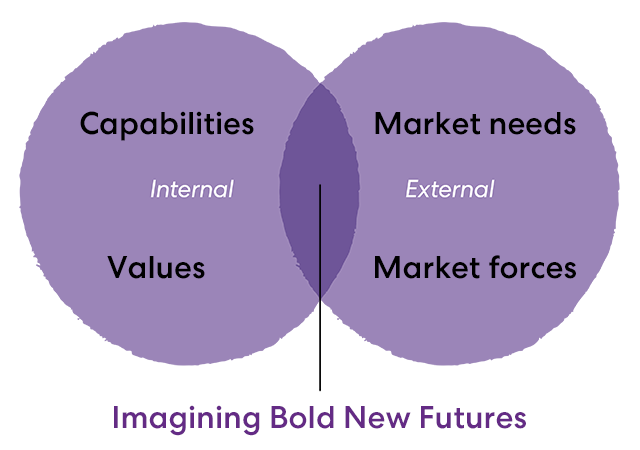Especially in Asia at this time of year, many companies find themselves initiating fresh projects and assembling new teams. During these transitions, it becomes imperative to establish a platform for building team capabilities and having honest and open discussions regarding company and project directions. BentoBox modules serve as a vital support system for such crucial moments.

A Case Study
“We were able to articulate, at a profound level, the sources of our strengths and the significance of preserving and fortifying them.”
We recently facilitated a discussion forum at one of Japan’s largest professional service agencies. The BentoBox was used to delve into the trajectory of a new business division—a cornerstone of their medium-term management plan.
Background:
- Organizational restructuring has given rise to a blend of diverse cultures within the organization.
- Collective discussion with the whole new business management team needed to be conducted.
The goals of the BentoBox sessions were:
- To convene the core members of the new business and explore their collective aspirations and the services they intend to provide.
- To foster an egalitarian discussion, leveraging the BentoBox methodology to guide the discourse.
- To integrate members from varied cultural backgrounds into a strong and cohesive team.
The new business management team convened for a day-long BentoBox module known as Imagining Bold New Futures (IBNF). This module helped the team to set their direction, and a shared vision among members was deepened.
Participant Feedback:
- “The exploration of four dimensions of organizational competence proved immensely valuable in comprehending the perspectives of team members regarding the organizational landscape, paving the way for subsequent discussions.”
- “We were able to articulate, at a profound level, the sources of our strengths and the significance of preserving and fortifying them.”
- “I appreciated the approach of amalgamating the company’s values with my personal values, alongside analyzing internal and external needs and advantages.”
- “We realized that while we dedicate ample time to team-building exercises with our clients, we often overlook investing similar efforts in strengthening our internal teams, thus reaffirming the value of such endeavors.”
- “I was amazed at how the BentoBox is so carefully designed. Participants can derive a fulfilling experience even when self-navigating the module like a game, without need for a facilitator.”
Conclusion
Our team brings decades of expertise in organizational transformation and leadership development to the table: https://bentobox-innovation.com/guides/
The BentoBox module fosters team cohesion and shared vision by leading participants through discussions with output objectives that adapt to the unique needs of the team.
Imagining Bold New Futures is very effective for charting new company and project directions. It strengthens interpersonal relationships between participants, as it helps them to set a shared vision for the future they will build.
Learn how Imagining Bold New Futures and other BentoBox modules can help your team and organization transform the way you work.
Please contact us at sales@bentabox-innovation.com with any questions and for more information.

